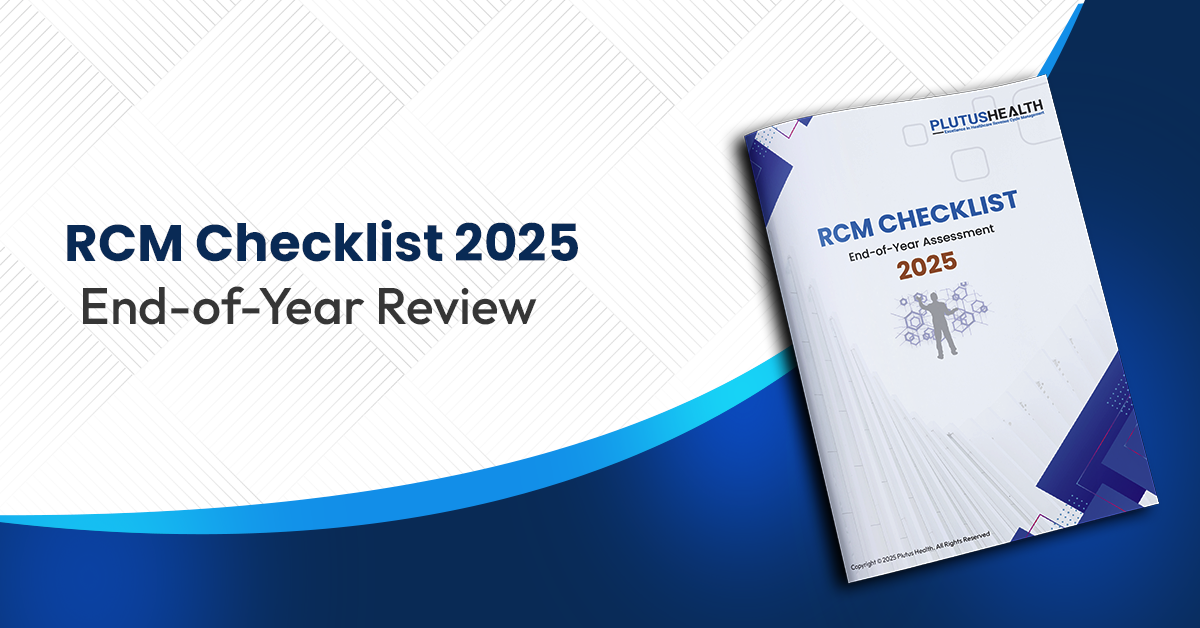Key Performance Indicators to Monitor in ASC Revenue Cycle
Key performance indicators KPI's are an essential component to improving an ASC's financial performance. By consistently monitoring specific items, a practice can streamline its operations. To discover what factors may harm specific KPI's and potential solutions, visit this article from Surgical Notes.
Here are the most integral key performance indicators to track.
Payer Type Trends
ASCs need to understand their projected revenue. Knowing what payer types are trending can help determine this estimate. A financial category boom or dip should modify income expectations. Even if your practice meets its predicted patient volume, failing to account for payer type can misalign your calculations.
To determine payer classes, compare the charges you send each agency to the reimbursements you receive. Payers that trend towards high charges but low payments may cause long-term financial problems.
Specialty Services Trends
Revenue per case is crucial to understanding future income. Check how much each specialty service nets. If your physicians are comfortable comparing peers, do this same process with them. A monthly revenue decrease for a physician or specialty may be worrisome. However, a spike in income should also cause concern as it may indicate upcoding.
Once you know how much each specialty nets, calculate the number of specialty visits you receive each month. A shift towards a lower revenue-generating service may significantly harm your financial predictions.
Days to Bill/Pay
On average, ASCs should send bills less than 48 hours after a service. If your practice takes significantly longer, address this problem immediately. Billing delays can increase days sales outstanding, denials, and even result in unnecessary lost payments.
Monitor days to pay to review how long it takes insurers to settle a claim. Different agencies have unique timelines. A reliable overall standard is 45 days. Medicare may take on average18 days, and workers' compensation may take around 55 days.
Note the average number of days it takes each insurer to pay. If you find that time to pay is increasing, examine the cause. Payment delays can oftentimes be avoided and if the claim is unnecessarily delayed may cause a rise in imply denials, billing issues, or payer miscommunications.
Cases and Days in AR
Patient financial responsibility is increasing. As such, tracking the number of days and cases in patient AR is critical. Numerous cases may indicate that most insurers have paid, and your practice billed many patients. However, a high number of days in patient AR may imply poor collection habits.
Note how many cases have surpassed 90 days in total AR Collection typically becomes impractical after this date. A general industry standard is less than 15% of AR should reach 90 days. Exceeding this standard points to revenue cycle issues that can easily be rectified with the right RCM processes and expertise.
Write Off Percentage
Write-offs can indicate denials, bad debt, timely filing, and other factors your staff failed to consider when billing and managing the total AR. Timely filing write-offs should never happen. Denial and bad debt write-offs are acceptable in low, consistent numbers. If your practice exceeds your maximum write-off goal, rethink your RCM processes and seek expert assistance to correct your RCM performance.
Clean Claims and Denial Reason
Calculate clean claims by measuring the percentage of claims a payer rejects. Clean claims show a successful professional coding and billing process that avoids denials. The industry goal for this metric is 98%. If your ASC receives a high rejection volume, it can imply a major claims or clearinghouse problem.
Denial reason is a critical indicator. While this reason is often a one-time fluke, it may highlight operating procedural issues. Record denials by which payer reported them. A high rejection volume from an payer can imply miscommunication of standards.
Yearly Financial Changes
Compare a period of one year with the same period the next year. Understanding long-term changes can help expose positive growth or worrisome decline. However, this metric on its own is too vague. Many factors may have contributed to shifts over the past year. Use this metric as part of a complex system designed to narrow down problems and lead you to viable solutions.
Plutus Health understands how complex revenue cycle management is. That's why we provide services that alleviate ASCs' burdens. Our professional billing and coding team relentlessly pursues an increase in reimbursements and a shorter turnaround time to get your reimbursements into your bank account speed. Talk with a representative today to begin your financial improvement journey.
Key Takeaways
1. Monitor payment volume trending.
2. Keep a close eye on specialty services income and volume.
3. Calculate days to bill and track reimbursements by the payer.
4. Track days and cases in total AR.
5. Manage write-off percentages.
6. Observe clean claims and denial reasons.
7. Compare year-to-year changes.
Liked the blog? Share it
FAQs


ABA providers are grappling with high staff turnover (up to 65%), rising burnout, administrative overload, and stagnant reimbursement rates. These challenges directly impact care continuity, clinical outcomes, and operational performance.


Operational inefficiency costs ABA teams up to 10 hours per staff member per week, contributing to burnout, denied claims, and longer accounts receivable (A/R) cycles. These inefficiencies ultimately result in reduced revenue and patient dissatisfaction.


Burnout leads to costly turnover, lower client retention, and decreased productivity. Recruiting and replacing a BCBA or RBT can cost up to $5,000 per hire, plus months of lost revenue and disruption to morale.


High-performing ABA organizations invest in clear career pathways for BCBAs and RBTs, align compensation with market benchmarks, and foster peer-led mentorship, flexible schedules, and wellness programs.


Automation tools like Plutus Health's Zeus streamline eligibility verification, denial management, and billing, reducing manual workloads by 5–10 hours weekly per clinician and improving clean claim rates by 95%.


Outsourcing revenue cycle management can improve collections, reduce denials by up to 30%, and free clinicians from billing-related admin tasks, resulting in better client care and financial outcomes.


One $200 million ABA network partnered with Plutus Health to automate eligibility and accounts receivable (A/R) processes. The result: $2M reduction in legacy A/R and a 97% Net Collection Rate.


By improving operational efficiency, investing in technology, and ensuring workforce stability, ABA leaders can align outcomes with reimbursement. Plutus Health supports this transition with scalable RCM and automation strategies.
FAQs


ABA therapy billing is the process of submitting claims to insurance or Medicaid for Applied Behavior Analysis services provided to individuals with autism or developmental disorders. It includes using correct CPT codes, proper documentation, and adherence to payer-specific policies.


Common CPT codes for ABA therapy in 2025 include:
- 97151 – Assessment and treatment planning
- 97153 – Direct therapy with the patient
- 97155 – Supervision and modification of behavior plan
- 97156 – Family adaptive training
- Always check with payers for any annual changes.


To bill Medicaid for ABA services, providers must ensure credentialing is complete, services are pre-authorized, and claims use the correct codes and modifiers. Medicaid requirements vary by state, so always follow state-specific billing rules.


Common ABA billing mistakes include:
- Incorrect or missing CPT codesplan
- Lack of documentation or treatment
- Uncredentialed providers rendering services
- Submitting duplicate or late claims


Without proper credentialing, providers can’t get reimbursed. Insurance and Medicaid require that BCBAs, RBTs, and organizations are credentialed and contracted. Delays in credentialing often cause revenue losses and claim rejections.
FAQs


CMS proposes a 2.4% increase in Medicare ASC payment rates, contingent on meeting ASCQR quality reporting requirements. Plutus Health helps ASCs meet these compliance benchmarks by integrating quality reporting data into RCM workflows, ensuring eligibility for full payment updates.


The ASC Covered Procedures List will expand by 547 procedures, including cardiology, spine, and vascular surgeries. Plutus Health supports expansion into new service lines by customizing RCM processes for high-acuity procedures, minimizing claim denials during the transition.


Site-neutrality narrows the payment gap with hospital outpatient departments, enhancing ASCs' cost-efficiency appeal. Plutus Health helps leverage this advantage in payer negotiations by providing performance dashboards and cost-justification analytics to secure stronger reimbursement terms.


Complex procedures increase denial risk and slow cash flow. Plutus Health's automation-first RCM model delivers 95%+ clean claim rates, reduces A/R days, and safeguards margins, even as your case mix becomes more complex.
FAQs


A hybrid RCM model combines in-house tasks like scheduling, intake, and patient communication with outsourced billing support for claims, denials, and A/R follow-up. Plutus Health enables this model with automation and expert teams.


Frequent CPT code updates, variable session lengths, high no-show rates, and sensitivity around patient collections make behavioral health billing uniquely challenging. Hybrid RCM helps strike a balance between compliance and patient care.


Tasks requiring patient interaction—like intake, eligibility checks, copay collection, and documentation—are best kept in-house, while backend processes can be outsourced.


Outsourcing denial management, claims scrubbing, and payment posting improves clean claim rates, reduces A/R days, and scales capacity without adding staff.


Plutus Health delivers 97%+ clean claim rates, AI-powered denial prediction, and 48-hour claim turnaround. Our hybrid RCM solutions provide behavioral health CFOs with visibility and control, while enhancing financial performance.
FAQs


Payment complexity, high out-of-pocket costs, increasing denials, and value-based care requirements are pushing providers toward more transparent, tech-supported payment systems.


Patients now act like consumers. They expect clear cost estimates, simple bills, digital payment options, and flexible financing.


AI, automation, and digital tools streamline estimates, reduce denials, support payment plans, and allow faster collections through mobile and online payments.


Complex billing questions, insurance confusion, and financial stress require a compassionate approach. Advocates guide patients and protect trust in clinical care.


Plutus Health supports providers with AI-driven denial prevention, predictive analytics, digital payment tools, patient financing, and a seamless platform, such as AnodynePay.


















































